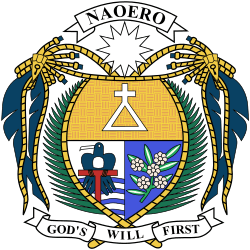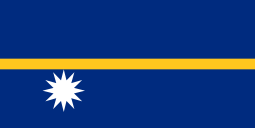Elections in Nauru
 |
| This article is part of a series on the politics and government of Nauru |
Nauru elects on a national level a head of state (the president) and a legislature. Parliament has 19 members (increased from 18 for the 2013 election), elected for a three-year term in multi-seat constituencies.[1] The president is elected for a three-year term by the parliament.
However, there are frequent changes of government in Nauru which occur without an election; most recently, in December 2007, that of President of Nauru Marcus Stephen came to office following a Parliamentary vote of no confidence which overturned the preceding Administration of Ludwig Scotty, reelected just a few weeks previously with a landslide majority.
Voting system
The 19 seat members of the Parliament of Nauru are elected through the Dowdall System, a decimalised modification of a preferential Borda count. The voter must rank all candidates in order of preference (see preferential voting). Each vote is then counted using the formula 1/n, according to ranking order. For example, a candidate ranked first receives one point, the second candidate receives half a point, the third candidate receives a third of a point, and so on. Each legal vote is aggregated in order to determine a decimal score for each candidate.[2] For example, in the Nauruan parliamentary election, June 2010 the then president Marcus Stephen regained his Anetan Constituency seat after receiving 349.617 decimal votes from a total of 630 votes.[3]
Latest elections
| Seats | Change | |
|---|---|---|
| supporters of the Government | 14 | |
| opponents of the Government | 5 | |
| Total | 19 |
Past elections
See also
References
- ↑ "Who comprises Parliament? - The Government of the Republic of Nauru". Retrieved 22 February 2015.
- ↑ "Nauru". Electionguide.org. Retrieved 13 December 2011.
- ↑ "Results of the General Election held on 19th June 2010" (PDF). http://www.naurugov.nr/parliament/index.html. Retrieved 16 December 2011. External link in
|work=(help)
